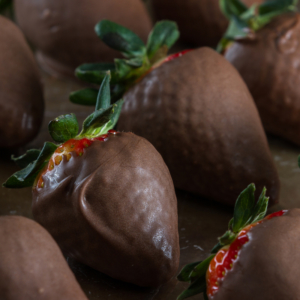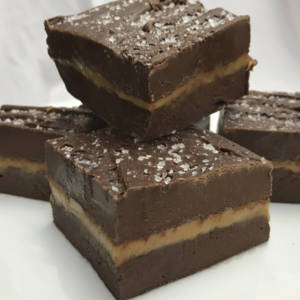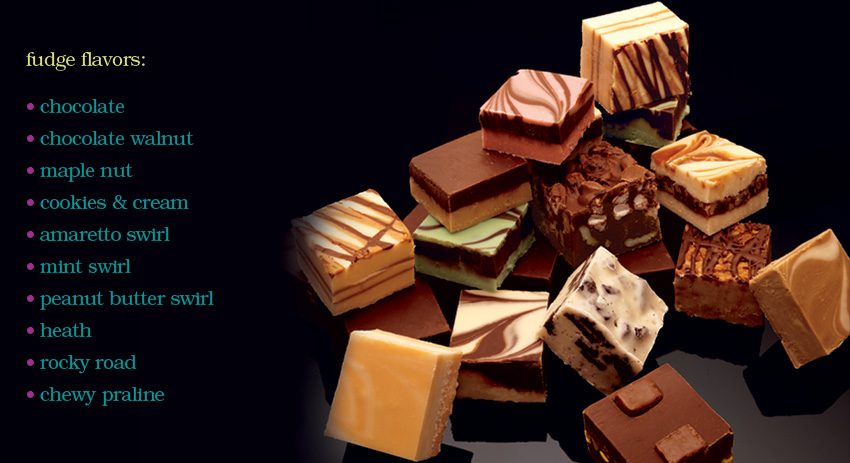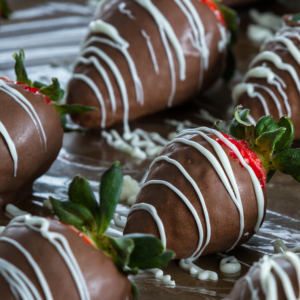Mother’s Day: 15 reasons we should make mums feel specialToday is Mother’s Day, and we reckon you should make your mum feel special, because she’s probably the person that loves you the most in the entire world.It’s a bit unfair that mums only get one day of the year where we really celebrate all the great things that they’ve done for us, and still continue to do. Being a mum is a life long job. Right from the moment you are born, to when you move out and start your own life, your mum never really stops caring about you and wondering if you’re okay. She is the best person in the world for a cuddle, a chat, and a good dose of honesty on why your latest Tinder date isn’t worthy of you.So take this day as an opportunity to make her feel really special.
1. She does EVERYTHINGShe definitely must have a time machine because she does everything. From working, to cooking, cleaning and even making sure that she’s up to date on current affairs and a bit of Corrie. There is nothing that this woman cannot do within a 24 hour period.2. The reason you’re hereYep, if it weren’t for her carrying you around for 9 months, and then looking after you for your whole life you wouldn’t be here today.3. Her pearls of wisdomYou learnt important stuff in school but the most useful life lessons all came from your mum. Lessons such as never going to sleep with wet hair, and how to handle bullies. Cheers mum4. And her protective natureThere is no-one else who would do anything to keep you safe and out of harms way. Like the time she texted your slimy ex and told him to bugger off because you deserve so much better.5. Always there for youWhether it is answering questions on what to with your hair, or giving you a hug when you get fired for the first time, mum’s always got your back.6. Great role modelAll of your greatest attributes and skills such as never giving up, knowing self-defence and how to not ruin your life have all come from watching the way your mum has manoeuvred through life. She taught you the importance of power dressing, and for that you will always be grateful.7. Sassy AFEveryone else may be fooled by her sweet nature, but you know that she has a sharp tongue.Like the time she made her hairdresser cry when they didn’t give her the right shade of brunette.8. And really toughDon’t be fooled by her frame, because this woman has the strength of Rambo. After all she dealt with you during your rebellious teenage phase, when every week you would be discovered drunk on cheap cider, and quite possibly with a new piercing.9. Judgement freeThe whole world may have judged you that time you decided to channel your inner emo and wear nothing but wide flared jeans, a dog chain, your dad’s skinny ties and colour your hair green. But not mum. Sure she may have not liked it, but she understood that it made you happy and that’s all that matters.10. Super proudRemember all those rubbish ‘art works’ you made in nursery consisting of ice lolly sticks, pipe cleaners and a lot of glitter? Well your mum has still kept them safe and sound. Even though they’re really crap, she still thinks she has a budding Van Gogh on her hands.11. Confidence for daysHave you ever seen this woman turn into a shrinking violet? No. Because she is brimming with more confidence that Beyoncé.12. Always honestIf you look really nice she’ll tell you. If you look like a dogs dinner, she’ll also give you a little pat and tell you. Can’t get fairer than that.13. Puts up with youWe’re all a bit annoying here and there, but only mums never seem to mind and love us just the same.
14. Has your best interests at heartThere is something extraordinary in knowing that there is always one person who will always give you the best possible advice, and want nothing but greatness for you.15. Always makes you feel specialHave you ever spoken to your mum when you’re feeling down and left not feeling better? No. Because there is something about a mother’s advice and cuddles that will make you feel like you’re the most special person in the entire world. Information shared from METRO NEWSBuy Chocolate Basket For Your Lovely Mother From Ashley’s Chocolate
|
||||||
Month: April 2017
What Is the History of Fudge?
 Fudge is a type of confectionery which is made by mixing sugar, butter and milk, heating it to the soft-ball stage at 240 °F (116 °C), and then beating the mixture while it cools so that it acquires a smooth, creamy consistency. Fruits, nuts, caramel, candies, and other flavors are sometimes added either inside or on top. It is often bought as a gift from a gift shop in tourist areas and attractions.
Fudge is a type of confectionery which is made by mixing sugar, butter and milk, heating it to the soft-ball stage at 240 °F (116 °C), and then beating the mixture while it cools so that it acquires a smooth, creamy consistency. Fruits, nuts, caramel, candies, and other flavors are sometimes added either inside or on top. It is often bought as a gift from a gift shop in tourist areas and attractions.

The origin of fudge is unclear, but the history of fudge can be traced back to at least 1886 CE. The exact origin and the inventor of fudge remain disputed, but some experts believe that the word “fudge” was first applied to a botched batch of caramels, prompting the exclamation, “Oh fudge!” Most food historians believe that fudge, as it exists today, is an American invention.
Fudge is a crystalline confectionery. Unlike many other types of candy, such as taffy and caramels, which forgo crystallization, crystal formation is necessary for the creation of fudge. This process creates a candy that is firm yet smooth as the crystals are so small that they do not taste or feel grainy. The fudge mixture, which must contain sugar, butter, and milk, must be properly prepared and cooled in order to create sugar crystals that are just the right size. If the process is not carried out correctly, the crystals will either form too early and become too large or never form at all, resulting in a candy similar to caramel.
The history of fudge may predate the foundation of the U.S., and experts are quick to point out the similarities between fudge and tablet, a Scottish confection. Tablet is first mentioned in The Household Book of Lady Grisell Baillie, which was written between 1692 and 1733 CE.
Emelyn Battersby Hartridge documents the first sale of fudge, writing a letter in 1886 stating that a schoolmate’s cousin had sold fudge for 40 cents per pound in Baltimore. In 1888, Ms. Hartridge, still attending Vassar College in Poughkeepsie, New York, wrote that she made as much as 30 pounds of fudge for the Senior auction. Fudge caught on quickly at Vassar and, before long, recipes for the confection began popping up at other women’s colleges. Smith and Wellesley colleges adapted the so-called original recipe into their own versions.
Vassar’s recipe called for white sugar, cream, unsweetened chocolate, and butter. The Wellesley College creation altered the original recipe only slightly by adding marshmallows, which keeps the fudge from collapsing during cooling. The Smith College recipe was the first to deviate from the original, adding extra butter along with brown and white sugar, molasses, and vanilla. Each of these recipes is notoriously delicate. The history of fudge was forever changed when corn syrup, which delays crystal formation, was first used for foolproof recipes.
Information shared from wiseGEEK
Ashley’s Confectionery creates the finest hand-dipped chocolates, creamy homemade fudge and carries the largest variety of licorice, gummies and old-fashioned candies. Ashley’s homemade fudge is soft, creamy, and the prefect amount of sweet. The highest quality ingredients are used to produce the ideal blend in our copper kettle resulting in 10 irresistible flavors that are sure to satisfy anyone’s craving.


How Are Jelly Beans Made?
Do you like beans? You’re probably saying, “That depends upon what kind of beans you’re talking about!” Green beans? Black beans? Pinto beans? Lima beans? There are many kinds of beans out there.
We bet there’s one kind of bean that almost all of you like, though. It’s hard on the outside and soft on the inside. And they’re usually really sweet and tasty. What are we talking about? Jelly beans, of course! Jelly beans are a popular type of candy. They’re shaped like a bean with a solid outer shell and a soft interior. They also come in a rainbow of colors and a wide variety of flavors. Their main ingredient is sugar, but there are other ingredients that give them their unique shape and texture. To make jelly beans, manufacturers heat liquid sugar to about 350 °F. They then mix in starch and glucose. The combined mixture is then poured into starch molds shaped like beans. They let the mixture dry in the molds for a day to give them their unique chewy texture. After they’re removed from the molds, the jelly beans are steamed and coated with more liquid sugar and then placed into a spinning machine. As the jelly beans are spun constantly, artificial colors and flavors are added to give them their final coloring and taste. Toward the end of the process, grains of sugar are added to the spinning machine about four times. It is this granularsugar that gives the jelly beans their hard outer shell. Finally, hot syrup and wax are added to the spinning machine at the very end to give the jelly beans their final polished, glossy look. Once they’re finished, the jelly beans are dried and packaged. Sometimes jelly beans are packaged and sold in individual flavors. Much of the time, though, they are sold in packages of mixed flavors to give jelly bean fans a wide variety of flavors. The history of jelly beans is a bit unclear. Some people believe their chewy insides were inspired by TurkishDelight, a Middle Eastern treat made of jelly and covered in powdered sugar. Jelly beans may have made their first appearance in the United States in 1861, when Boston confectioner William Schrafft encouraged customers to send his jelly beans to soldiers during the Civil War. Historians believe jelly beans first became linked with the Christian holiday of Easter in the 1930s. Some of the most common jelly bean flavors include cherry, orange, lemon, lime, grape, licorice, lemonade and strawberry. Many gourmet flavors are available from specialty manufacturers, too. Examples of gourmet flavors include raspberry, coconut and popcorn. Information shared from wonderopolis Indulge yourself. Call or stop by Ashley’s for hand-dipped chocolates, creamy ice cream and delectable candies. Order Online! For yourself or for gifts to people around the US!Twelve interesting facts about chocolate






